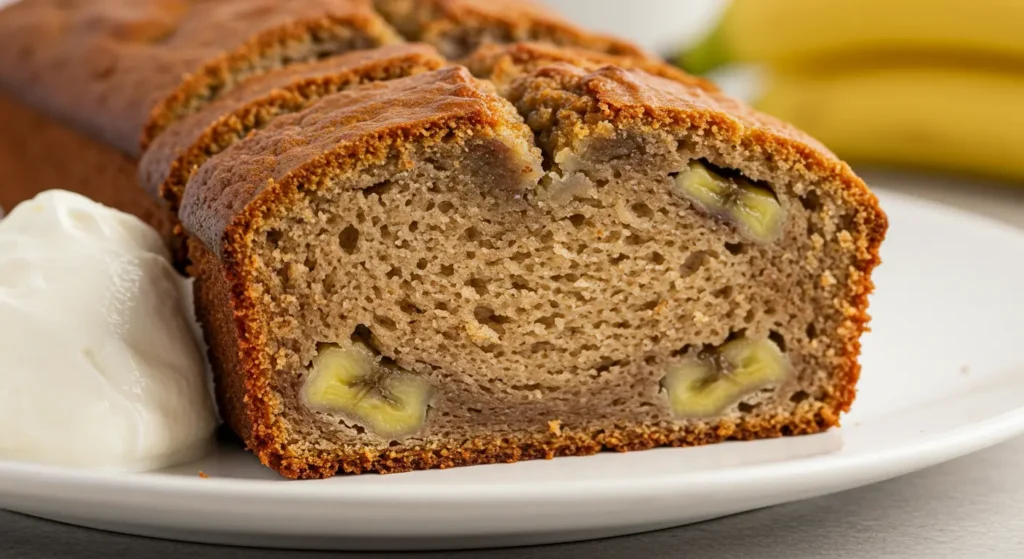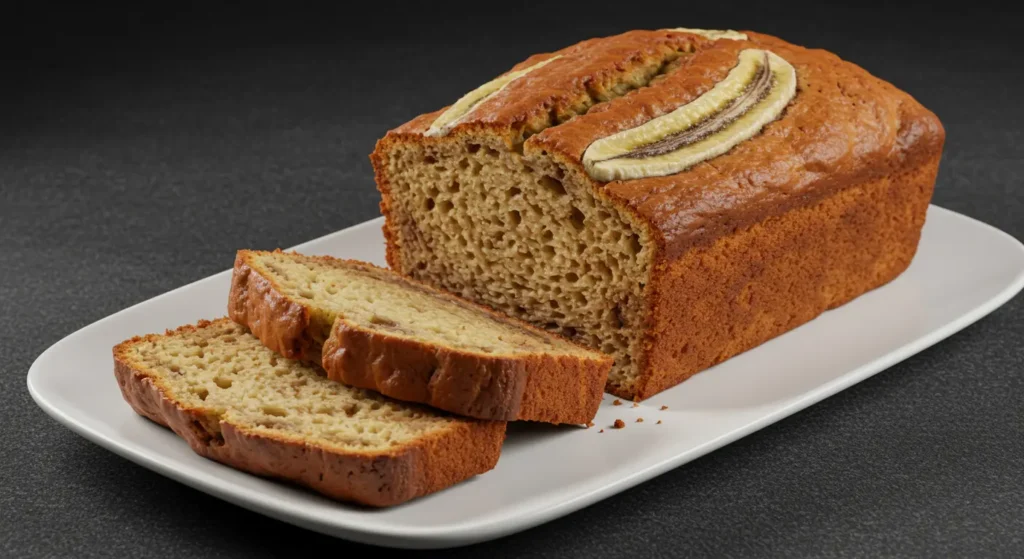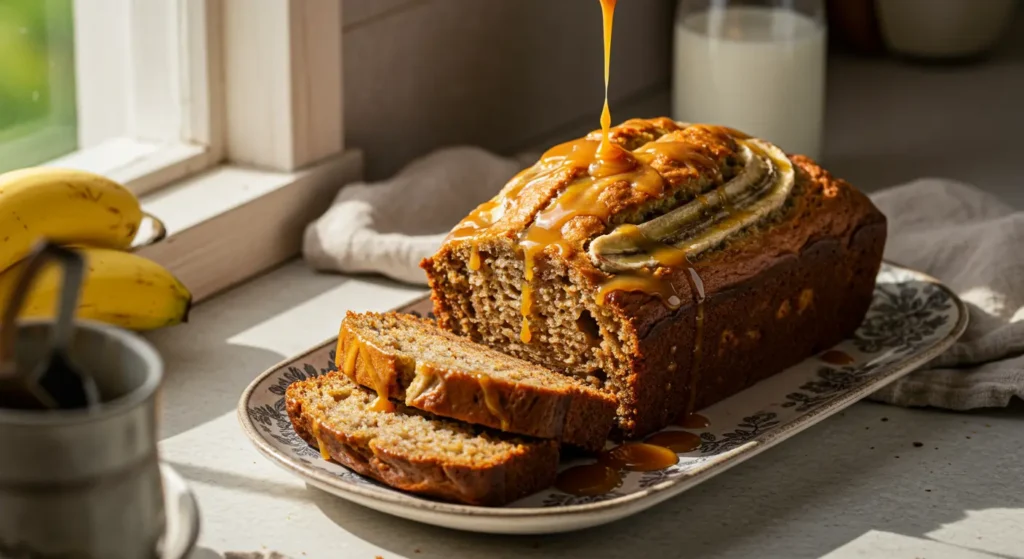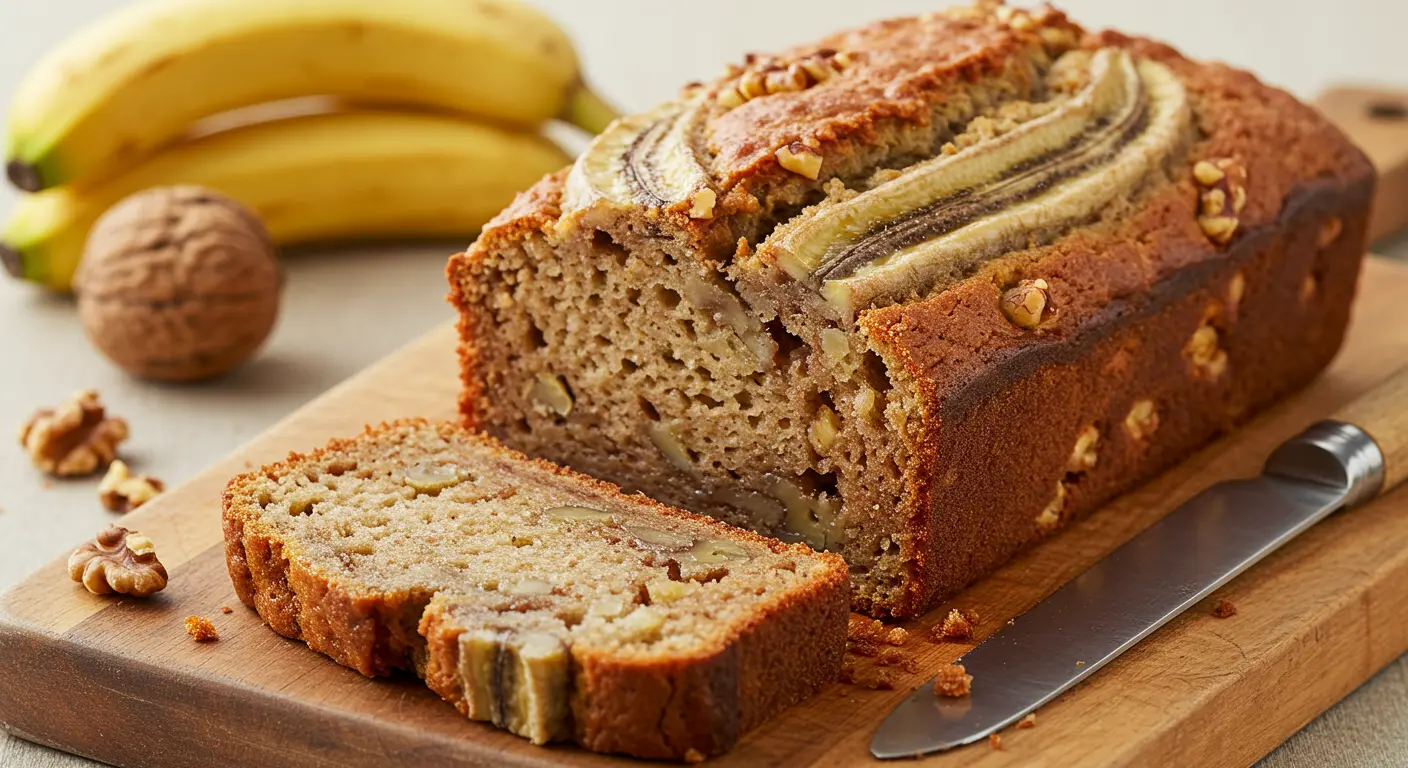Discover the nutritional pros and cons of this beloved treat and learn how to make banana bread a healthier option in your diet.
The Comforting Appeal of Banana Bread: Healthy or Not?
Hi, I’m Rayhana! Today, I want to talk about banana bread. The sweet aroma of freshly baked banana bread fills the kitchen with warmth and nostalgia. But as we focus more on healthy eating, many wonder—Is
healthy or unhealthy? The answer isn’t as simple as yes or no.
Banana bread sits at an interesting crossroads of nutrition. On one hand, it contains fruit and can be made with wholesome ingredients. On the other hand, traditional recipes often include substantial amounts of sugar and refined flour.
This article dives deep into the nutritional profile of banana bread, examining its benefits and drawbacks. We’ll also explore how different ingredients and preparation methods can tip the scale toward making this beloved treat either a nutritional asset or liability.
The Nutritional Profile of Traditional Banana Bread
Before we judge whether banana bread is healthy or unhealthy, let’s break down what’s typically in a standard slice.
Key Nutrients in a Typical Slice
A standard slice of traditional banana bread (about 60g) typically contains:
- 180-220 calories
- 3-4g protein
- 25-30g carbohydrates
- 7-12g fat
- 2-3g fiber
- 11-15g sugar
The nutritional content varies widely depending on the recipe, with homemade versions generally offering more control over ingredients than store-bought options.
The Good: Health Benefits of Banana Bread
Banana bread isn’t just delicious—it offers several nutritional advantages:
Natural Sweetness from Bananas
Ripe bananas provide natural sweetness, potentially reducing the need for added sugars. They also contribute:
- Vitamin B6 for brain health and metabolism
- Potassium for heart and muscle function
- Vitamin C for immune support
- Fiber for digestion
Customizable for Health
Unlike many baked goods, banana bread can be easily modified to increase its nutritional value:
- Whole grain flours add fiber and nutrients
- Nuts add protein and healthy fats
- Seeds contribute omega-3 fatty acids
- Spices like cinnamon can help regulate blood sugar
The Concerns: Why Banana Bread Might Not Be Healthy
Despite its potential benefits, traditional banana bread has several nutritional drawbacks:
Added Sugars and Refined Flour
Most recipes call for:
- 1/2 to 1 cup of sugar per loaf
- White flour, which has been stripped of fiber and nutrients
- Butter or oil adding saturated fat and calories
Calorie Density
Banana bread is calorie-dense, making it easy to consume more energy than intended. A standard slice can contain as many calories as a small meal but without the same nutritional balance.

Is Banana Bread Healthier Than Regular Bread?
When asking if banana bread is healthy or unhealthy, many people wonder how it compares to everyday bread.
Nutritional Comparison
Regular sandwich bread typically has:
- Fewer calories per slice (70-100)
- Less sugar (1-3g)
- Similar or higher protein content
- Lower fat content
Banana bread generally has:
- More vitamins from fruit
- Higher natural sugar content
- More calories and fat
- Potentially more fiber (if made with whole grains)
The Verdict
While banana bread contains fruit and can provide certain nutrients, it’s more accurately categorized as a treat than a staple food. Regular bread, especially whole grain varieties, is generally a better everyday choice for balanced nutrition.
Making Banana Bread Healthier: Simple Swaps
If you’re wondering how to enjoy banana bread while keeping it on the healthier side, these modifications can make a significant difference.
Flour Alternatives for Better Nutrition
Replacing white flour can boost the nutritional profile:
- Whole wheat flour adds fiber and B vitamins
- Oat flour provides soluble fiber for heart health
- Almond flour increases protein and reduces carbs
- Coconut flour adds fiber while lowering the glycemic impact
Reducing Sugar Without Sacrificing Taste
Several strategies can help cut down the sugar content:
- Use extra-ripe bananas for maximum natural sweetness
- Try date paste as a natural sweetener
- Experiment with half the sugar called for in recipes
- Consider natural options like honey or maple syrup (though these are still sugars)
Adding Protein for Balance
Increasing protein makes banana bread more satisfying and nutritionally complete:
- Add chopped nuts like walnuts or pecans
- Mix in hemp seeds or ground flaxseed
- Include Greek yogurt in the batter
- Try adding a scoop of unflavored protein powder
Is Banana Bread Bad for Weight Loss?
Many people specifically wonder if banana bread is healthy or unhealthy when trying to lose weight.
Calorie Considerations
With 180-220 calories per slice, banana bread can fit into a weight-loss plan if:
- It’s accounted for in your daily calorie goals
- Portion sizes are controlled
- It replaces higher-calorie desserts
- The recipe is modified to reduce calories
Satiety Factors
How filling banana bread is depends on its ingredients:
- Higher fiber versions keep you fuller longer
- Added protein improves satiety
- Nuts and seeds provide healthy fats that slow digestion
Timing Matters
When you eat banana bread can affect weight management:
- As a pre-workout snack, the carbs provide energy
- Paired with protein (like a small yogurt), it creates a more balanced snack
- Evening consumption may be less ideal for some people’s metabolism

Banana Bread for Special Dietary Needs
The flexibility of banana bread recipes makes it adaptable for various dietary requirements.
Gluten-Free Options
For those with celiac disease or gluten sensitivity:
- Rice flour blends work well in banana bread
- Oat flour (certified gluten-free) provides good texture
- Almond and coconut flours create dense, rich loaves
Vegan Banana Bread
Animal product substitutions include:
- Flax eggs (1 Tbsp ground flaxseed + 3 Tbsp water = 1 egg)
- Plant-based yogurt for moisture
- Coconut oil or plant-based butter alternatives
- Plant milks in place of dairy
Low-Sugar and Diabetic-Friendly Versions
For blood sugar management:
- Use stevia or monk fruit as sugar alternatives
- Incorporate cinnamon to help regulate blood sugar
- Add extra fiber through nuts, seeds, and whole grains
- Reduce the overall carbohydrate content with almond flour
Store-Bought vs. Homemade: Which is Healthier?
When considering if banana bread is healthy or unhealthy, the source makes a significant difference.
Commercial Banana Bread Concerns
Store-bought versions often contain:
- Preservatives for shelf stability
- Higher sugar content for taste and texture
- Palm oil or hydrogenated oils
- Artificial flavors and colors
The Homemade Advantage
Making banana bread at home allows for:
- Control over quality and type of ingredients
- Customization based on dietary needs
- Reduction of unnecessary additives
- Fresh, preservative-free consumption
Reading Labels Effectively
If buying commercial banana bread, look for:
- Short ingredient lists with recognizable items
- Whole food ingredients listed first
- Low added sugar content
- Absence of artificial additives

Banana Bread in a Balanced Diet
Understanding how banana bread fits into an overall healthy eating pattern helps answer whether banana bread is healthy or unhealthy.
The 80/20 Approach
Many nutritionists recommend:
- Focusing on whole, nutrient-dense foods 80% of the time
- Allowing for treats and less nutritious options 20% of the time
- Including banana bread as part of that 20% flexibility
Pairing for Nutritional Balance
Improve the nutritional value of your banana bread snack by pairing it with:
- Protein sources like Greek yogurt or nut butter
- Fresh fruit for additional vitamins and fiber
- A small handful of nuts for healthy fats
Mindful Consumption
How you eat banana bread matters:
- Enjoy it slowly and mindfully
- Recognize it as a treat rather than a dietary staple
- Appreciate the satisfaction it provides in reasonable portions
Is Banana Bread a Processed Food?
The question of whether banana bread is healthy or unhealthy connects to concerns about processed foods.
Defining Food Processing
Food processing exists on a spectrum:
- Minimally processed (washing, cutting, freezing)
- Moderately processed (cooking, baking, fermenting)
- Highly processed (refining, extracting, artificially flavoring)
Where Banana Bread Falls
Homemade banana bread is typically:
- Moderately processed through baking
- Made from a mix of minimally processed ingredients (bananas) and moderately processed ones (flour)
Store-bought versions tend to be:
- More highly processed with additional ingredients
- Designed for longer shelf life rather than nutritional quality
The Processing Perspective
From a processing standpoint:
- Homemade banana bread with whole food ingredients falls on the less concerning end of the spectrum
- Commercial varieties with many additives fall on the more concerning end
The Final Verdict: Is Banana Bread Healthy or Unhealthy?
After examining all aspects, we can now provide a nuanced answer to whether banana bread is healthy or unhealthy.
Context Matters Most
Banana bread’s health value depends on:
- The ingredients used in preparation
- How much and how often it’s consumed
- What it replaces in your diet
- Your overall dietary pattern and health goals
The Balanced Perspective
Rather than labeling banana bread as simply “healthy” or “unhealthy,” consider it as:
- A treat that can provide some nutritional benefits
- A food that can be modified to improve its nutritional profile
- Something to enjoy in moderation as part of a varied diet
Making Informed Choices
The healthiest approach to banana bread involves:
- Being aware of its nutritional content
- Making thoughtful ingredient choices
- Enjoying it mindfully and in appropriate portions
- Balancing it with plenty of nutrient-dense whole foods
Frequently Asked Questions
Is it healthy to eat banana bread?
Banana bread can be part of a healthy diet when made with nutritious ingredients and eaten in moderation. Traditional recipes containing significant amounts of sugar and refined flour are best treated as occasional treats. Healthier versions made with whole grains, less sugar, and added nuts or seeds offer more nutritional benefits while still satisfying your sweet tooth.
Is banana bread healthier than bread?
Regular bread, especially whole grain varieties, is generally healthier for everyday consumption than banana bread. Standard bread typically contains less sugar and fewer calories per slice. However, banana bread does provide some nutrients from bananas and can be made with wholesome ingredients. For daily use, choose regular whole grain bread; save banana bread as a more nutritious alternative to cake or cookies.
Is banana bread bad for losing weight?
Banana bread can fit into a weight loss plan if consumed mindfully. Traditional recipes are calorie-dense, so portion control is essential. Consider healthier modifications like reducing sugar, using whole grain flour, and adding protein through nuts or seeds. Timing matters too – enjoying banana bread as an occasional breakfast or pre-workout snack may be more beneficial than eating it as a late-night treat.
Is banana bread a processed food?
Homemade banana bread is a minimally to moderately processed food, depending on the ingredients used. When made from scratch with whole food ingredients, it undergoes only basic processing through mixing and baking. Store-bought versions typically contain more additives and preservatives, placing them higher on the processing spectrum. For the least processed option, bake your own using whole grain flour, natural sweeteners, and fresh bananas.
